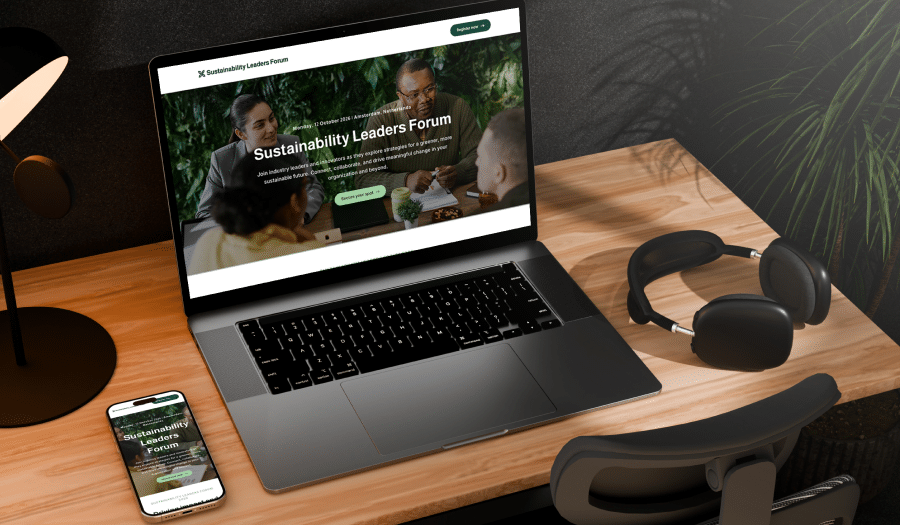
As we enter 2024, professional event planners are experiencing some challenging economic headwinds. Many customers are facing the need to reign in costs and do more with less. Event ROI is undoubtedly top-of-mind. So, beyond improving ROI by being more efficient, what should you be focusing on to generate more revenue?
On the other side of the ROI coin, you need to think strategically about increasing revenue. Ironically, increasing revenue can be even harder to accomplish when you’re working with constrained budgets. Most revenue generation tactics require some sort of financial investment up-front.
However, the good news is that if you’re armed with the right strategies and event technology to support them, you can implement some sales techniques that will pay for themselves many times over. Let’s take a look at some of our favorites now.
1. Increase ticket sales
The first and most obvious way you can increase your event revenue is by selling more tickets. However, this is usually easier said than done! Most people are incredibly time-poor, so your event needs to be incredibly compelling to the target audience if you want them to engage and attend.
Creating a compelling event is just one piece of the puzzle. The other piece is making sure the right people know about it and register to attend. This all comes down to having a robust data-driven marketing strategy. It’s always best to be proactive with your data, to ensure you’re reaching the right people, with the right message, at the right time.
You may also like to consider expanding your ticket sales beyond the original registration. For example, you could offer attendees the ability to buy tickets to pop-up events or special tours while they are on-site, using your customized event app. Think of it like an impromptu candy bar purchase while you’re going through the supermarket checkout!
This is not only a useful revenue-generation technique – it can also add to the fun and excitement of the event, and help your attendees have a memorable experience.
2. Consider event merchandise
As well as event tickets, your mobile event app can also be used as a shopfront to sell branded event merchandise. We’ve seen simple but incredibly effective Shopify stores created for an event, and promoted through the event app, so attendees can order merchandise.
A winning tip is to only bring merchandise samples to the event itself, with shipping to be fulfilled once everyone has returned home. Not only does this improve the attendee experience as it avoids the need to carry extra luggage but it will also manage your freight costs (which again will contribute to improved ROI).
3. Increase sponsorships by keeping it simple
Your prospective sponsors are busy people, so it’s best to keep things as simple and easy as possible. This means harnessing the power of event technology to create a simple “one-stop shop” for the sponsor to find out about different tiers of sponsorship, access timelines for when things need to be done and (most importantly) register their interest in becoming a sponsor.
Just like with your attendees, it’s a great idea to offer your sponsors several optional add-ons, such as the ability to place logos on swag bags on swag bags or coffee cups. We shared some helpful ideas on maximizing your event sponsorship opportunities in this earlier article.
How you communicate with your sponsors is critical. With the right technology and event marketing tools, much of the sponsorship journey can be automated, with targeted email communications, text messages and alerts, sent out to enhance their experience.
One of the final steps in the sponsor communication journey should always be a close-out email that highlights the key results from the event. Infographics always work well here.
4. Sell virtual tickets – at the right price
There’s so much to be said about the in-person v hybrid v live format debate. When it comes to increasing reach (and revenue), there’s a clear opportunity to sell more tickets to people who either can’t or don’t want to attend in-person.
If you’re opening your event to virtual attendees, there are a few things to consider to ensure you deliver a fantastic experience that transcends format. For example, how much will your remote attendees pay to attend the event? We usually recommend setting the virtual registration fee at around 35% of the full registration fee, which represents the profit element of an on-site attendee.
5. Establish a passive revenue stream
When it comes to increasing ROI, passive revenue is the Holy Grail. You’re making money with very little ongoing input, long after the event has finished – even when you’re asleep!
A great way for event planners to set up a passive revenue stream is to monetize your on-demand content. With the right platform, you could even build a Netflix-esque viewing experience for your on-demand attendees (behind a paywall, of course). People will be able to experience the magic of the event weeks or even months later – and pay for the content, too.
How can we help you deliver better ROI for your events?
At EventsAir, we understand the importance of selecting the right event technology partner – someone who can help you deliver exceptional events both today and in the future. Thankfully, EventsAir includes a comprehensive suite of tools and features to help you improve ROI for your events.
EventsAir includes built-in tools to help you track and manage budgets, as well as everything you’ll need to increase revenue from your event. We can help you delight your prospective attendees with seamless registration and event marketing; or a virtual on-demand portal to bring in passive revenue once the event is concluded.
Finally, our built-in marketing and engagement tools will also help you attract, nurture and delight your attendees, sponsors and exhibitors, ultimately improving the bottom line of your event – today and in the future.
We have one simple mission: to help event planners deliver the WOW in their events with the world’s most powerful event management technology. We’ve delivered some of the world’s biggest events, and we’d love to help you too.
Best Practice | Event Planning & Management
See EventsAir in action
Discover why 12,000+ event professionals trust EventsAir to deliver effortless events, every time.




